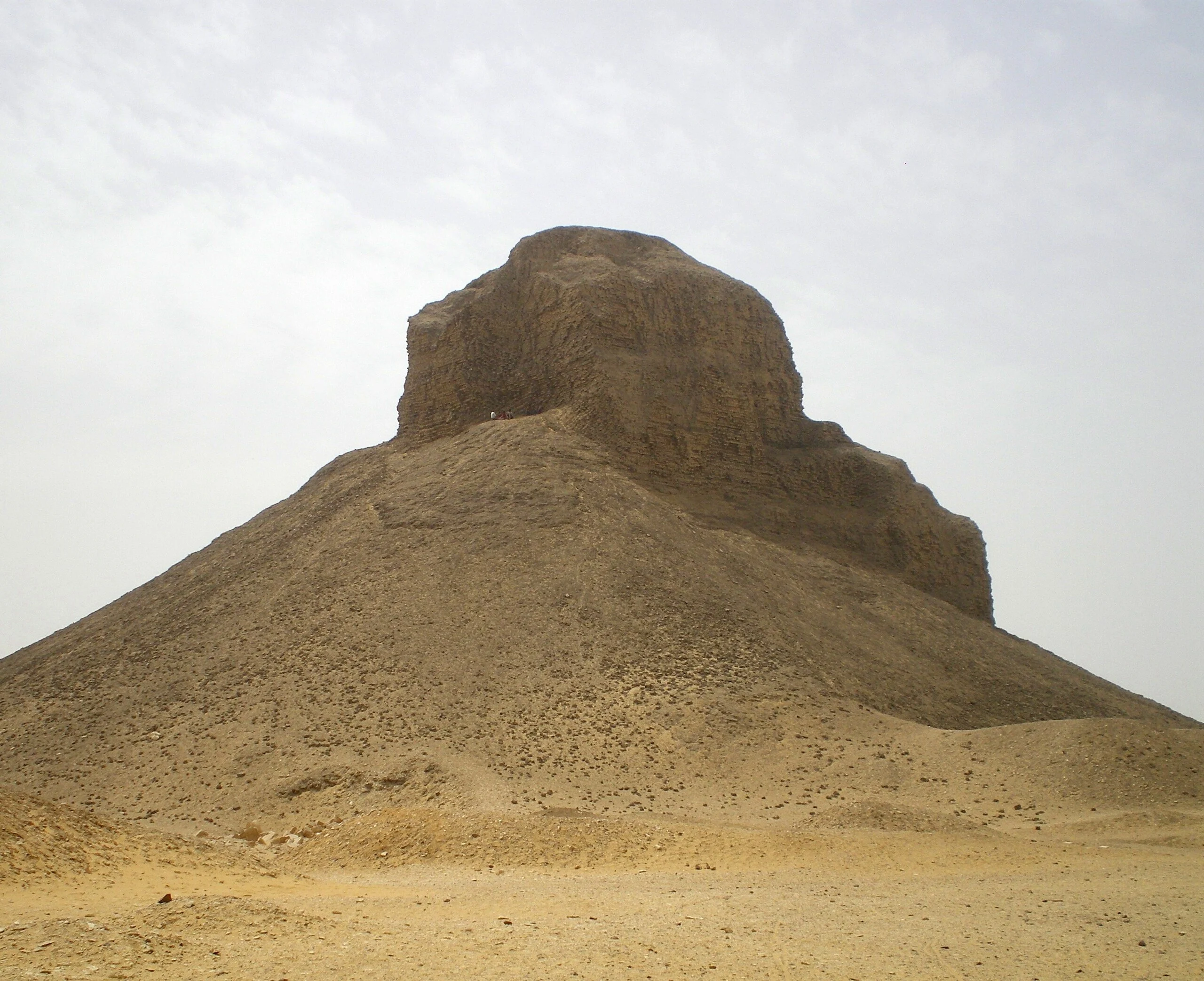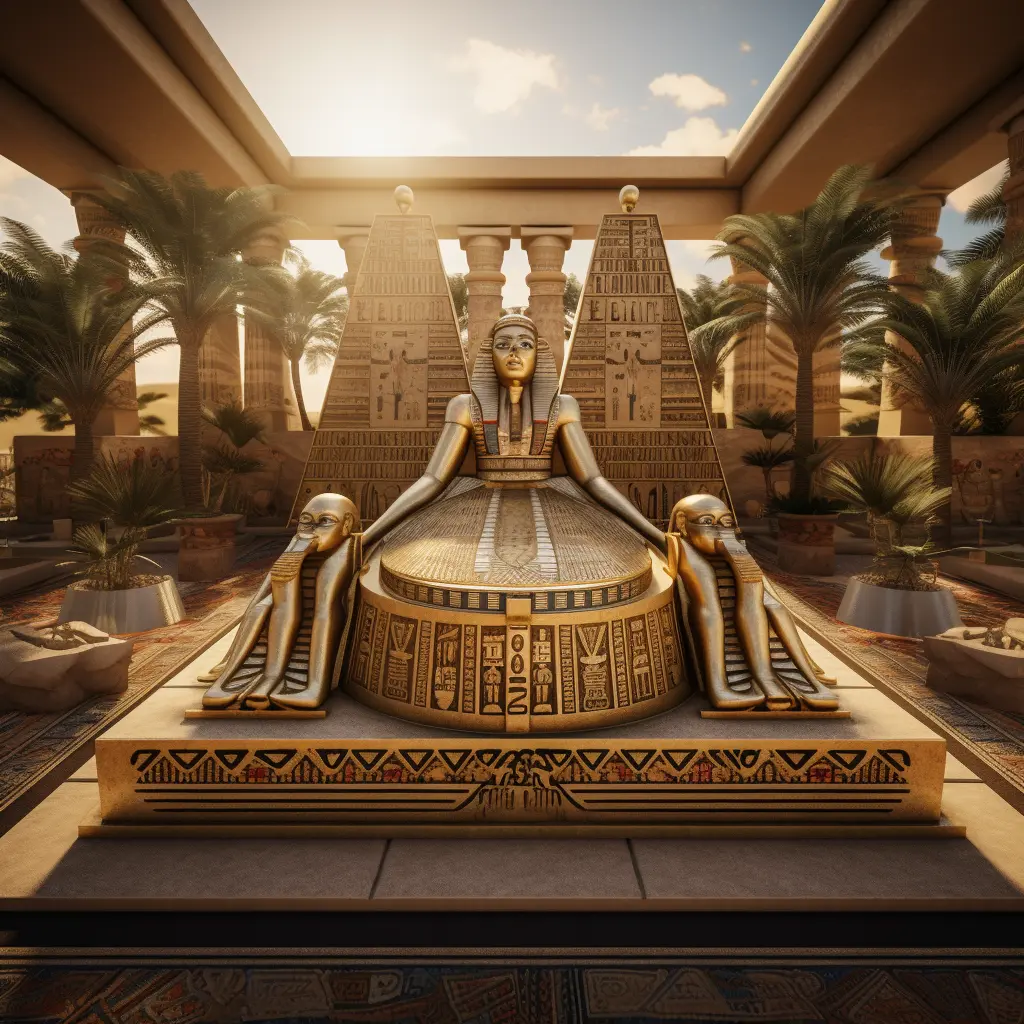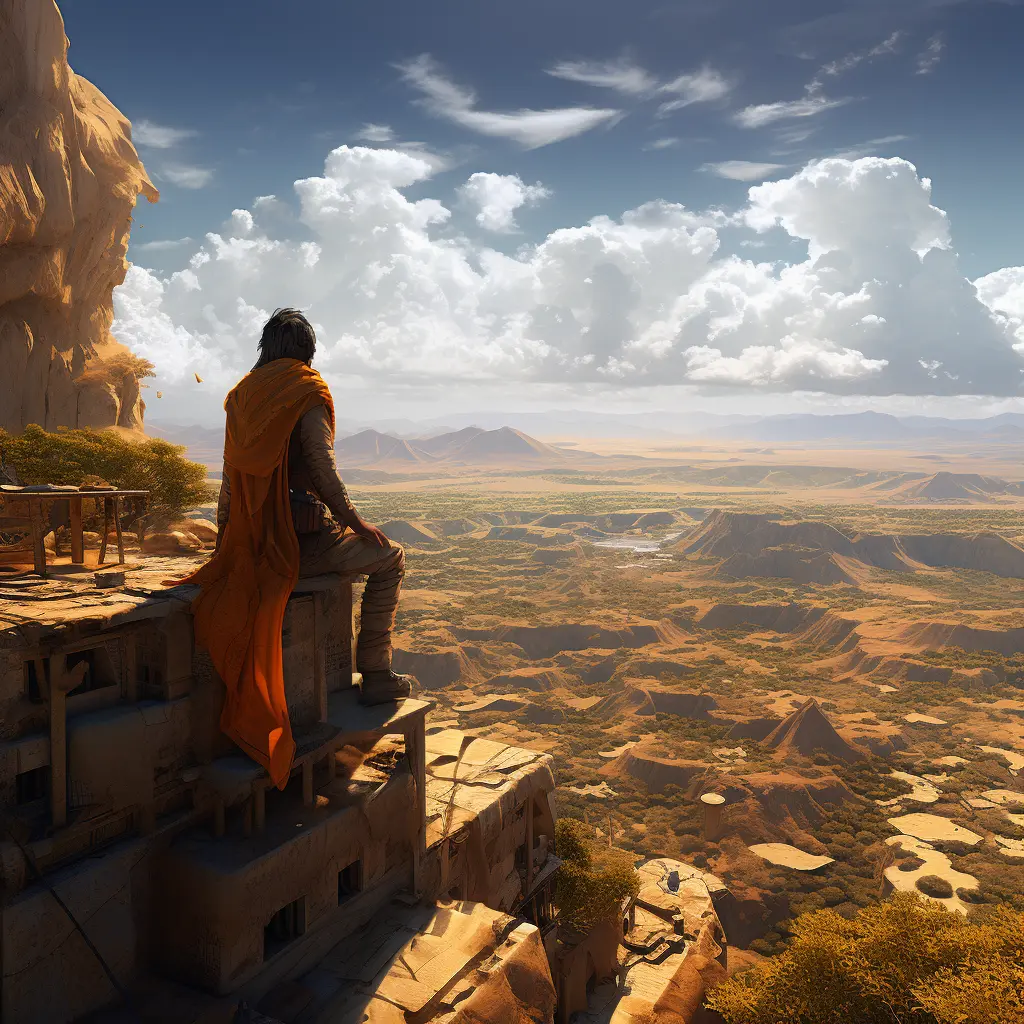
The Black Pyramid – Source Wikipedia
Egypt, a land of vast deserts, enigmatic hieroglyphs, and majestic pyramids. When we think of these iconic structures, the Great Pyramid of Giza or the Sphinx might instantly come to mind. But hidden amidst Egypt’s vast archaeological treasures lies the lesser-known, yet equally fascinating, Black Pyramid. In this article, we will delve deep into its history, its architectural uniqueness, and its geographical location, shedding light on this often-overlooked gem of ancient Egyptian architecture.
Origins of the Black Pyramid
Dahshur, a royal necropolis located in the desert on the west bank of the Nile, houses the Black Pyramid. Built during the reign of Pharaoh Amenemhat III of the 12th dynasty, around 1850 BCE, this structure differs significantly from the smooth-sided pyramids of Giza.
Architectural Marvel of the Middle Kingdom
The Black Pyramid’s moniker arises from its dark, decaying mudbrick appearance. Unlike the stone-built pyramids of Giza, the Black Pyramid predominantly used mudbricks, reinforced with stone. This cost-saving strategy was not merely economic but had symbolic significance too; mudbricks were associated with the primordial mound of Egyptian creation myths.
A unique feature of the Black Pyramid is its intricate labyrinth of corridors and chambers, which surpasses other pyramids in complexity. While this design was undoubtedly meant to deter tomb robbers, it also symbolized the intricate journey of the afterlife in Egyptian belief.
Where is the Black Pyramid located?
Dahshur, about 40 kilometers south of Cairo, cradles this ancient marvel. The location, historically significant in its own right, has served as a royal necropolis for many pharaohs. Yet, it is lesser traversed by tourists than the famed Giza plateau. The relative obscurity of the Black Pyramid amidst other archaeological giants grants it an air of untouched, raw authenticity.
The Significance of the Black Pyramid
From an archaeological perspective, the Black Pyramid and its surrounding complexes provide crucial insights into the Middle Kingdom’s socio-political environment. The choice of materials, the techniques employed, and even the pyramid’s location reflect broader shifts in Egypt’s political, economic, and religious landscapes during Pharaoh Amenemhat III’s reign.
Moreover, the Black Pyramid stands as a testament to ancient Egypt’s architectural innovation. Transitioning from the Old Kingdom’s step-sided pyramids and the Giza plateau’s smooth-sided structures, the Black Pyramid represents an architectural midpoint, bridging two significant styles.
Why Visit the Black Pyramid?
While the Giza pyramids are undeniably grand, there is something profound about standing at the base of the Black Pyramid, untouched by commercial tourism’s hustle and bustle. Walking through its complex corridors, one can almost hear the whispers of priests and imagine the reverence with which ancient Egyptians treated this sacred ground.
Conclusion
The Black Pyramid, nestled in Dahshur’s sands, is a marvel that deserves as much recognition as its more famous counterparts in Giza. A structure representing Egypt’s Middle Kingdom’s architectural, political, and religious transitions, it beckons historians, archaeologists, and travelers alike to uncover its myriad mysteries.
Visiting the Black Pyramid isn’t just about witnessing another ancient structure; it’s about immersing oneself in an authentic Egyptian experience, untainted by commercial overtones. In the quest for knowledge, understanding, and the thrill of discovery, let’s ensure gems like the Black Pyramid aren’t left in the shadows of their more illustrious peers.



